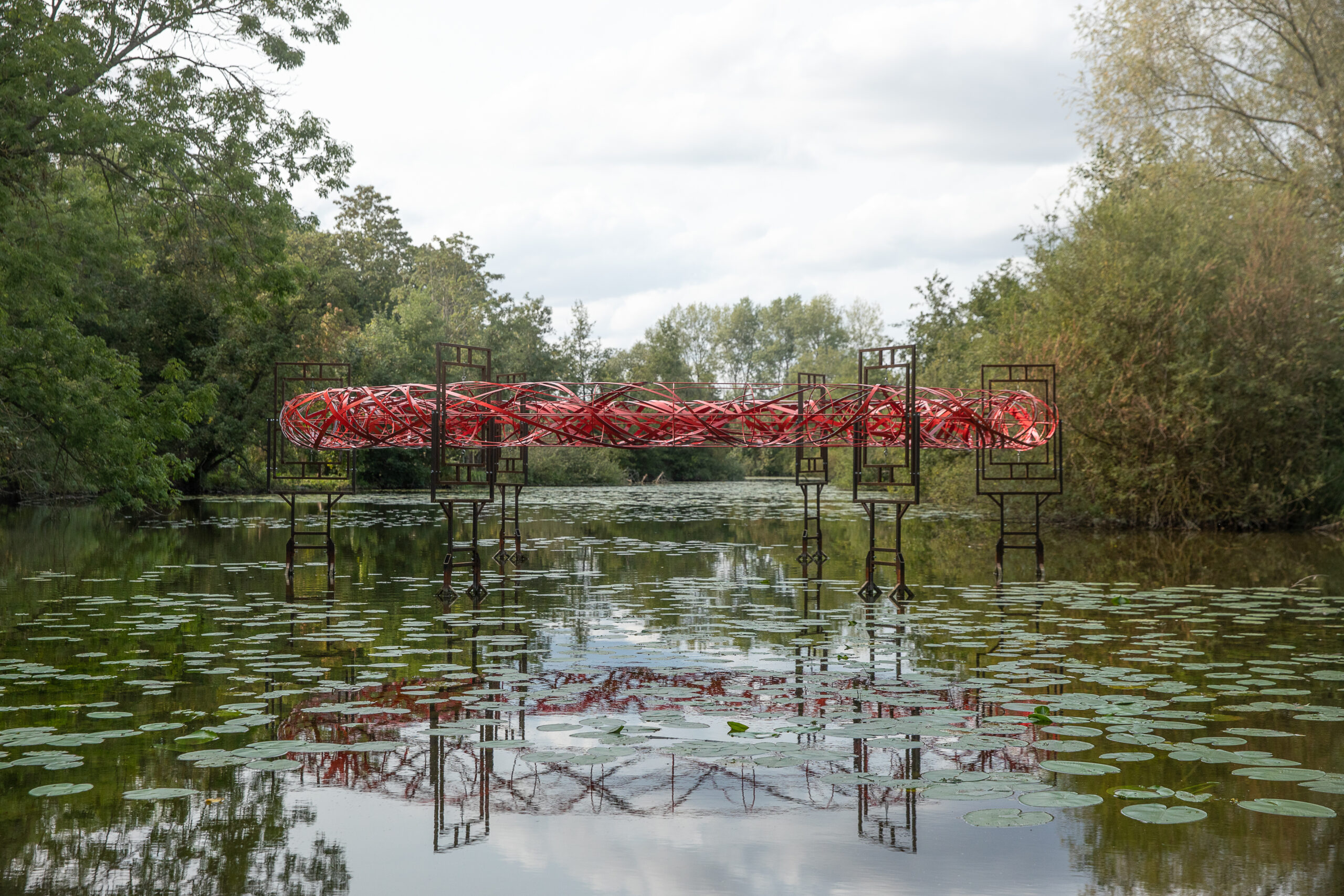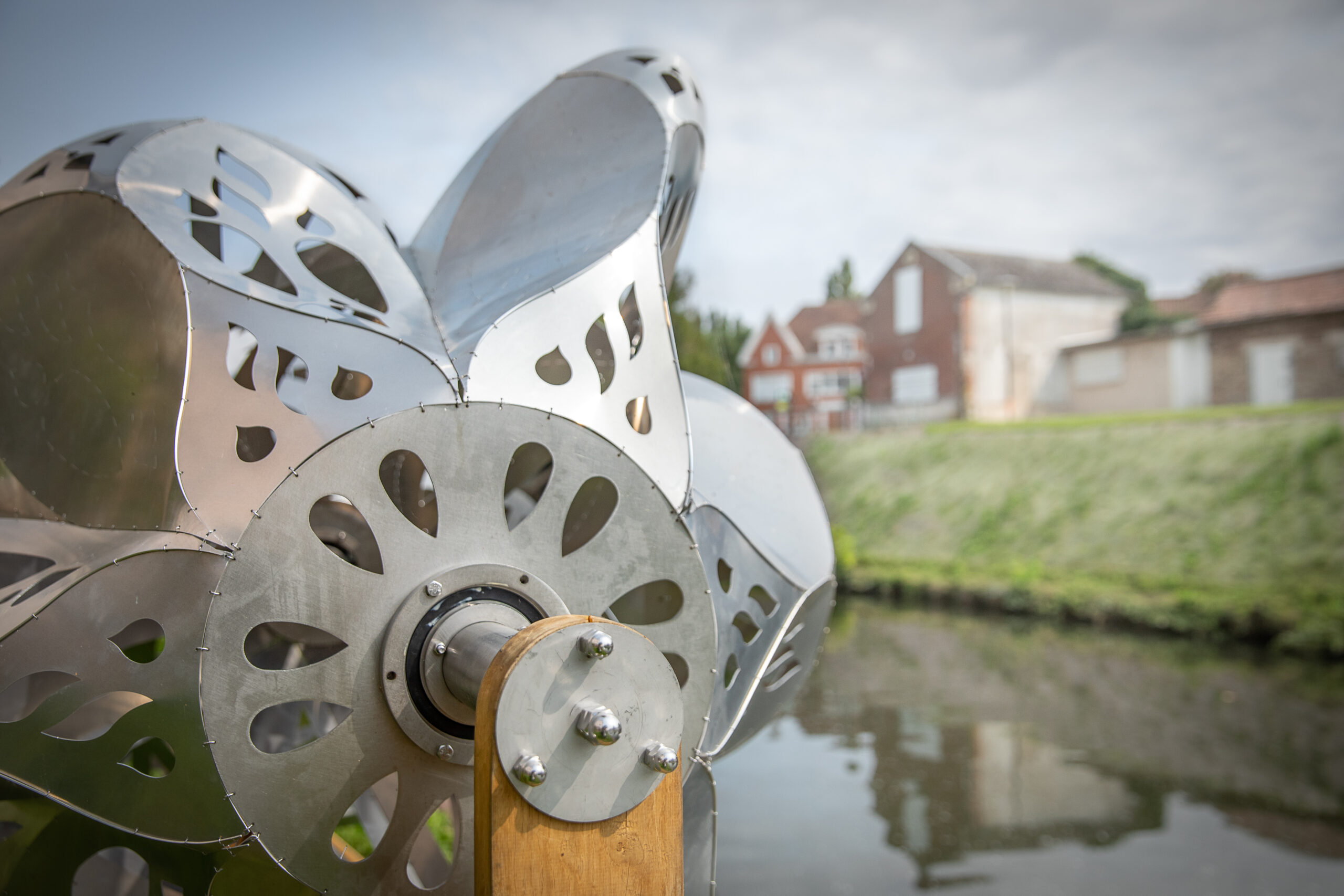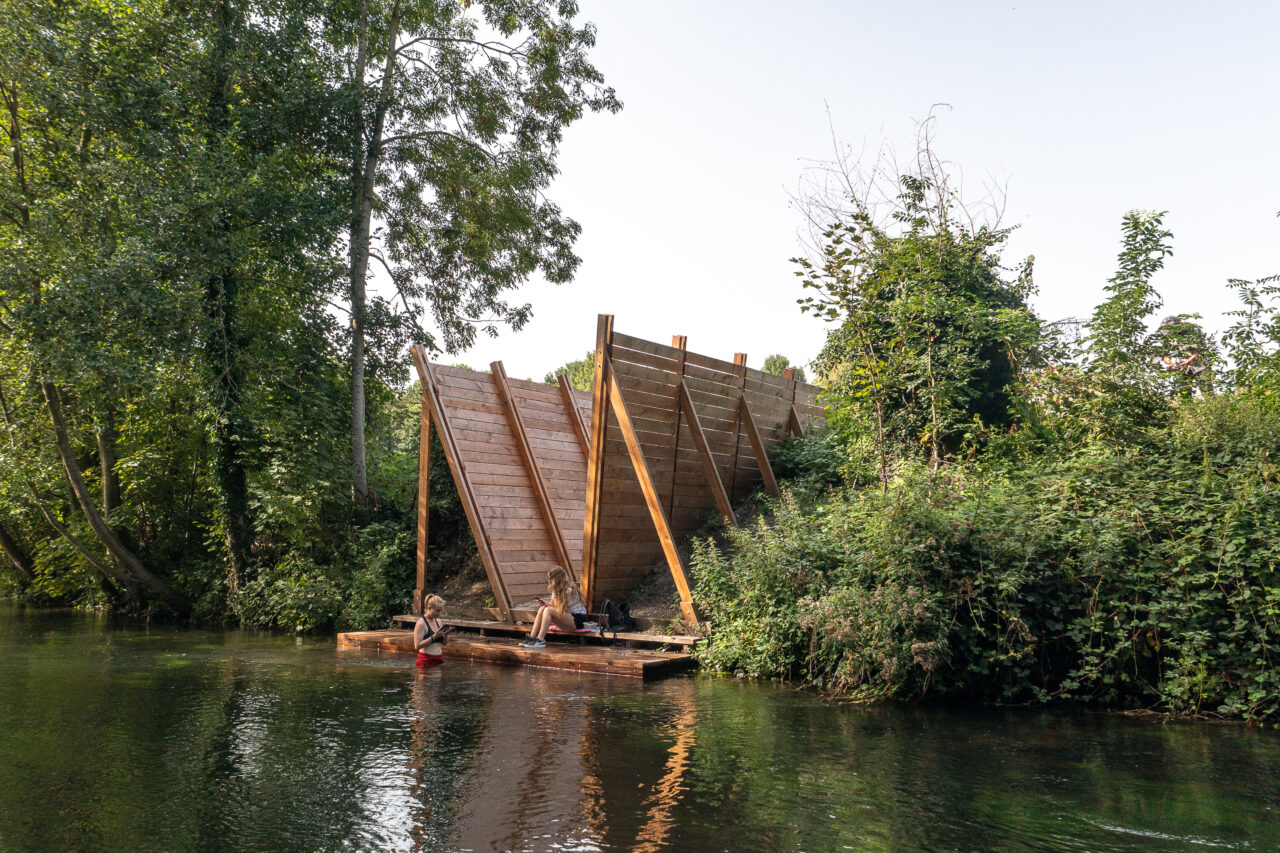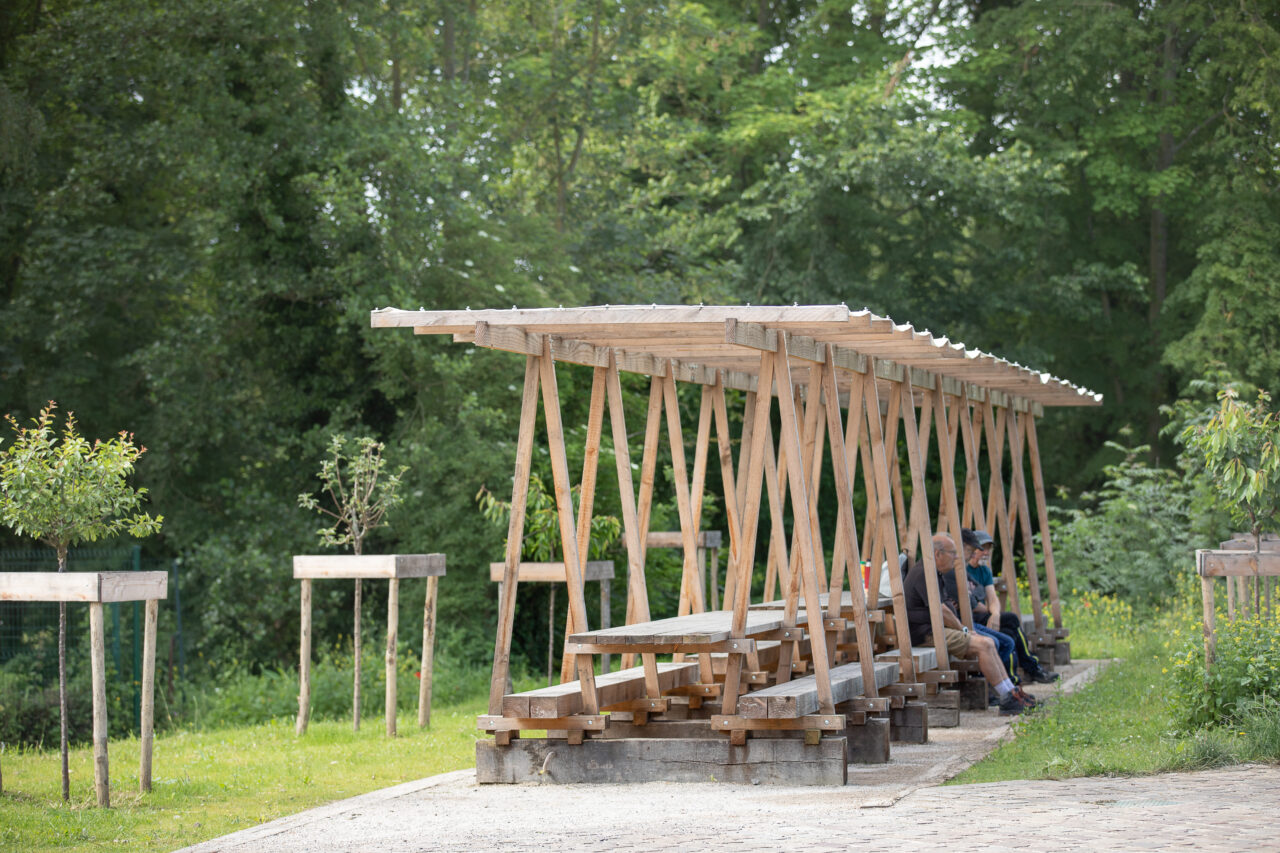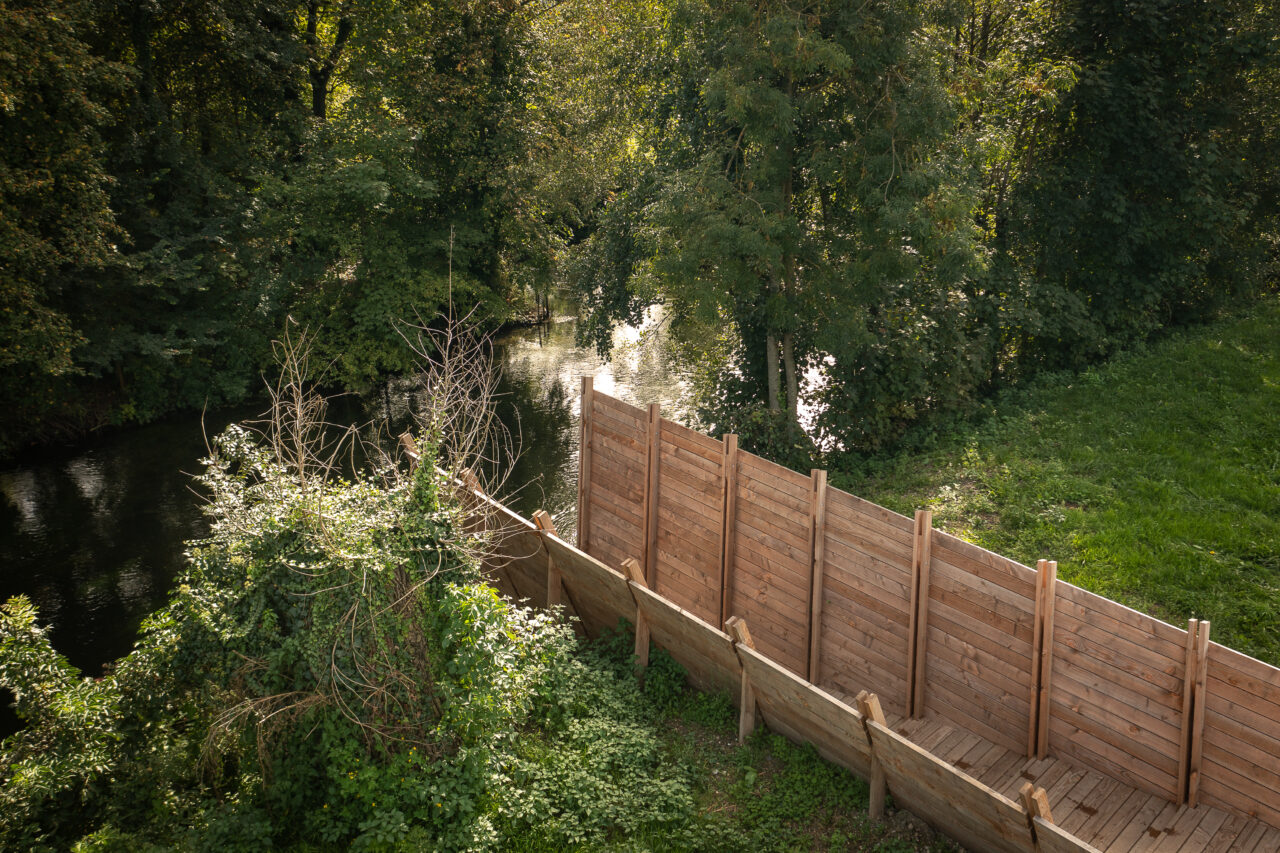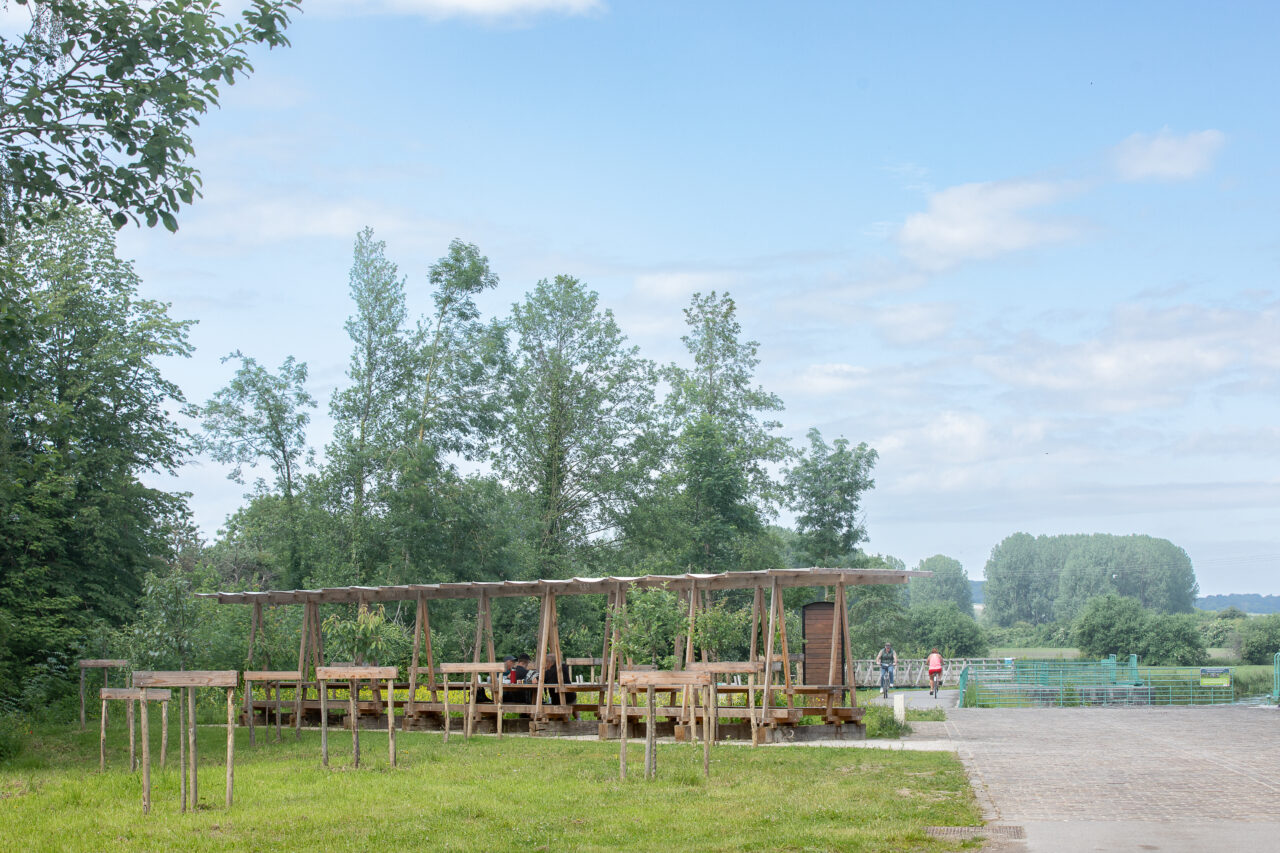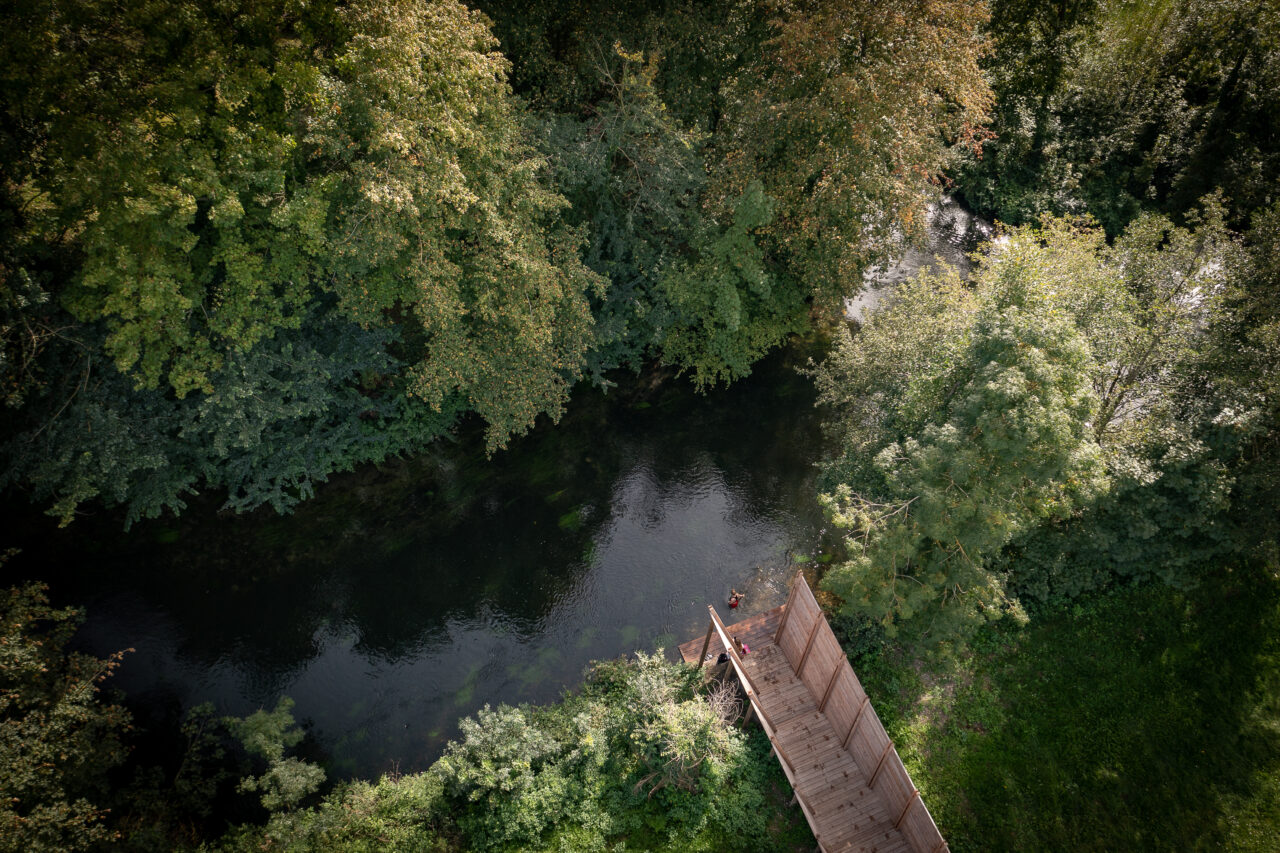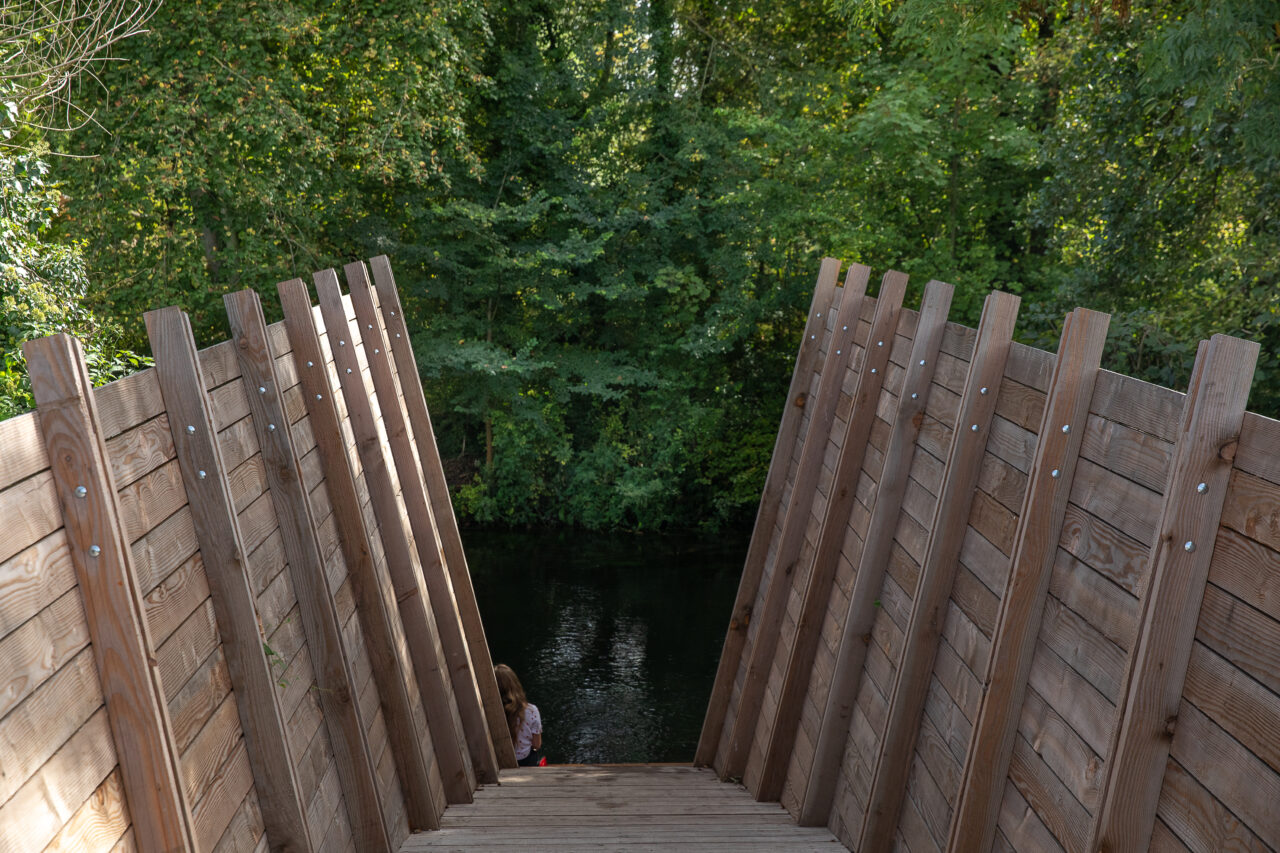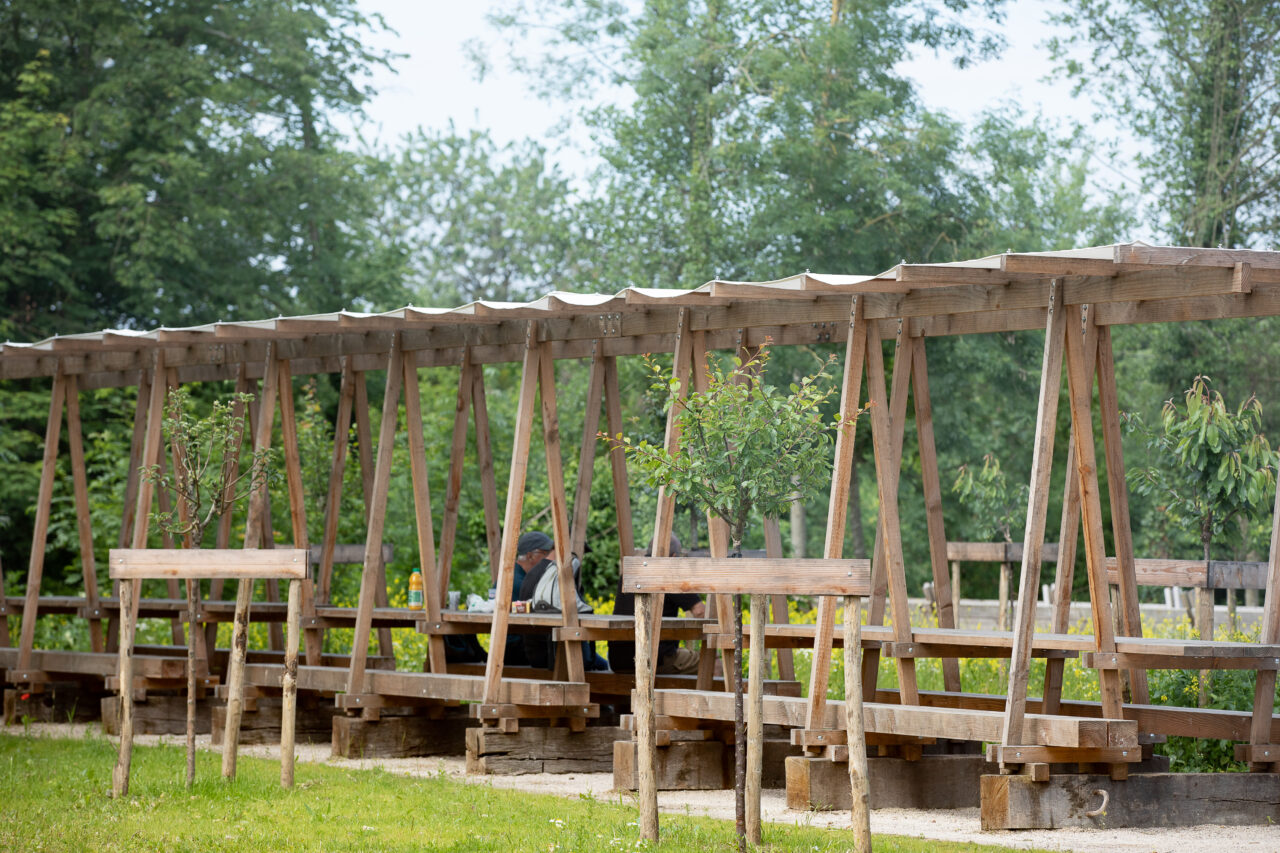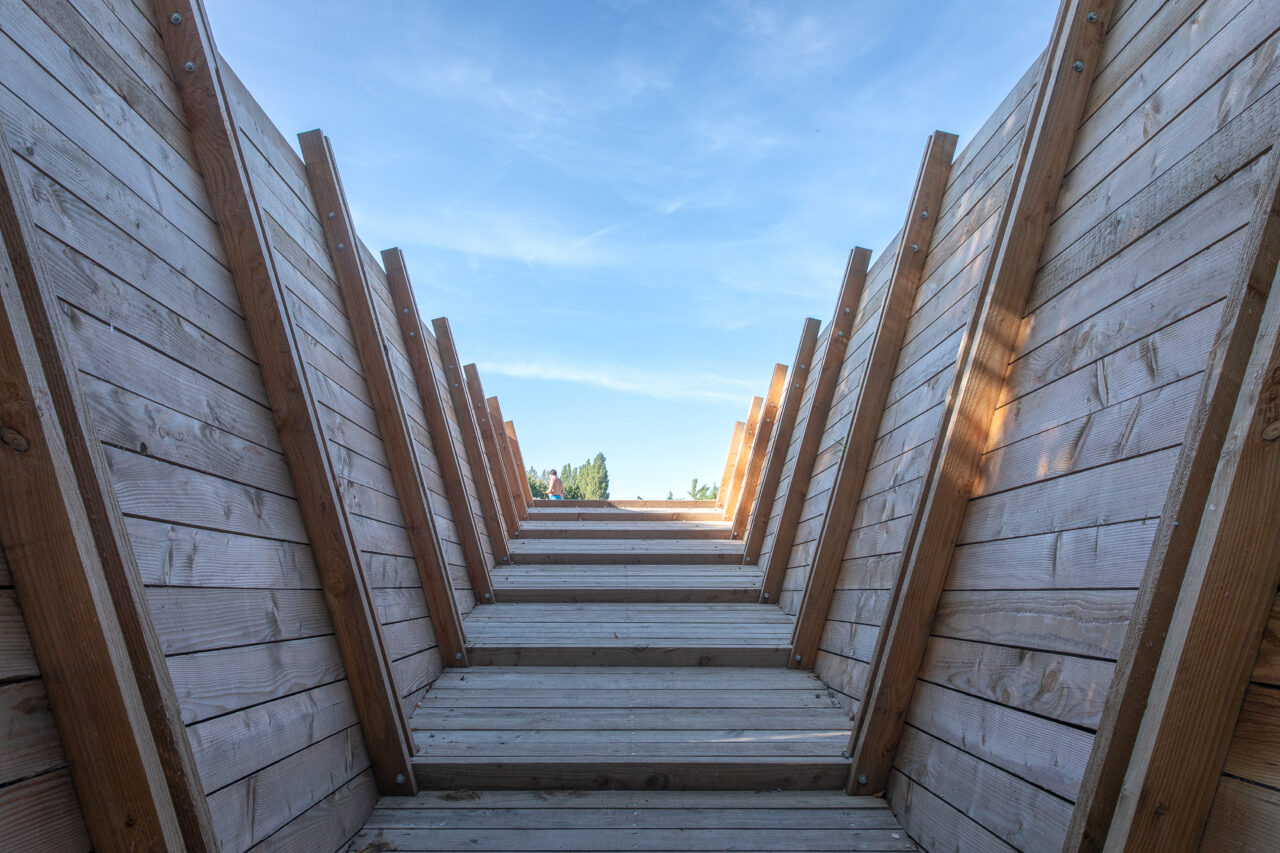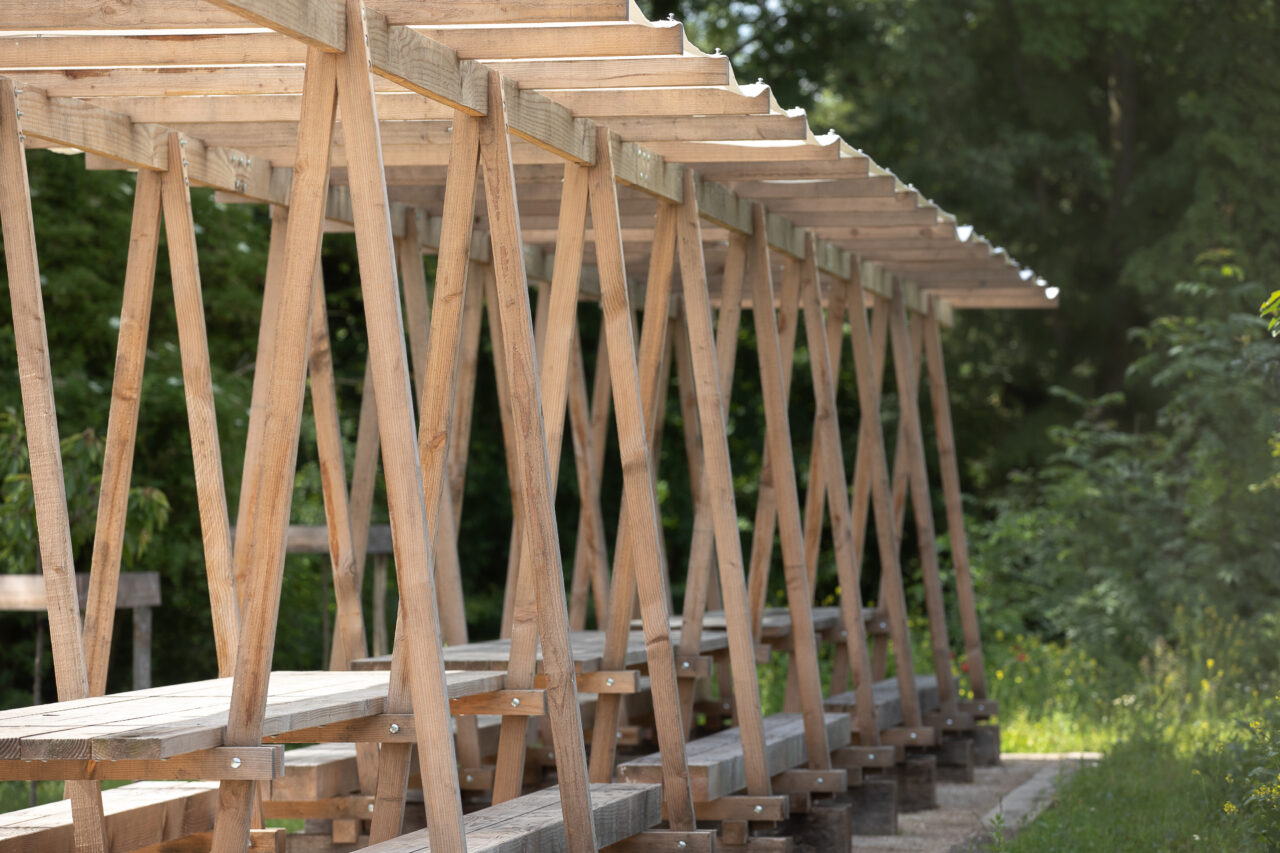Le Déversoir > Atelier Quand Même, 2023/2024
The work is a complex installation that revolves around an object integrated into the site’s morphology: Le Déversoir is a structure that connects the Somme Canal with the neighboring course of the Old Somme River.
This wooden structure, anchored to the bank, physically and visually links the two branches of the same river, which have opposing characteristics: one seems to have followed its winding path naturally, while the other adopts the artificial rigidity of the canal. At this point, they are close to each other, but their elevations differ by about 2 meters.
Beyond this topographical interplay, Le Déversoir also connects with the site’s history by evoking the now largely faded memory of the industrial activity it once supported, which contributed to the wealth of Pont-Remy. The architectural nature of the work directly references this history by borrowing from the aesthetics of the canal’s hydraulic structures and the weirs of the town’s former mill district.
Additionally, this sunken passage, accessible to both walkers and canoeists, plays with the idea of connection by integrating—on its own scale—the network of the canal’s communication routes.
A simple gesture, three inclined wooden panels incise the slope.
The presence of the structure is intended to be discreet, emerging slightly so as not to complicate an already heterogeneous surrounding landscape. Along the towpath, among the horizontal lines of the canal, the flanks of Le Déversoir emerge at the height of the lock gate railings. It is upon reaching it that the fault reveals its depth. The horizontality of its emergences gives a sense of the ground’s slope, which descends in a false perspective to the river’s surface.
The conical shape offers a sensory gradient, a progressive relationship between body and object. As one descends, the walls close in and rise higher. It’s a sort of pedestrian lock: Before reaching the river, the space places the visitor in a confined atmosphere. The pontoon beneath Le Déversoir—which is only revealed at the bottom—allows contact with the water, which is harder to access along the canal’s masonry banks. Here, the river’s cross-sectional surface is exposed, and the banks impose their calming vegetative ambiance.
When ascending, the gaze is drawn upwards, called by the shape that widens and frames the sky above the lock.
At the lock’s plateau, Le Déversoir crosses a grassy meadow where the lock keeper’s house recently stood. This area now hosts an orchard that could have been the lock keeper’s garden, paying tribute to the emblematic kitchen gardens of the valley floors with its local species. Away from the towpath’s flow, the regular pattern of tree crowns offers a shaded rest area for passersby, along with seasonal fruit. A long table slides between two rows of trunks, emphasizing the perspective and creating a new link between the towpath and the bank of the Old Somme. The table’s framework echoes the oblique walls of Le Déversoir and floats like a raft on thick sections of stoplogs from a nearby lock.
This composite installation questions the status of an artwork as it—through a simple architectural gesture, landscaping, and a modest choice of materials that embrace the patina of time—emphasizes functionality.


